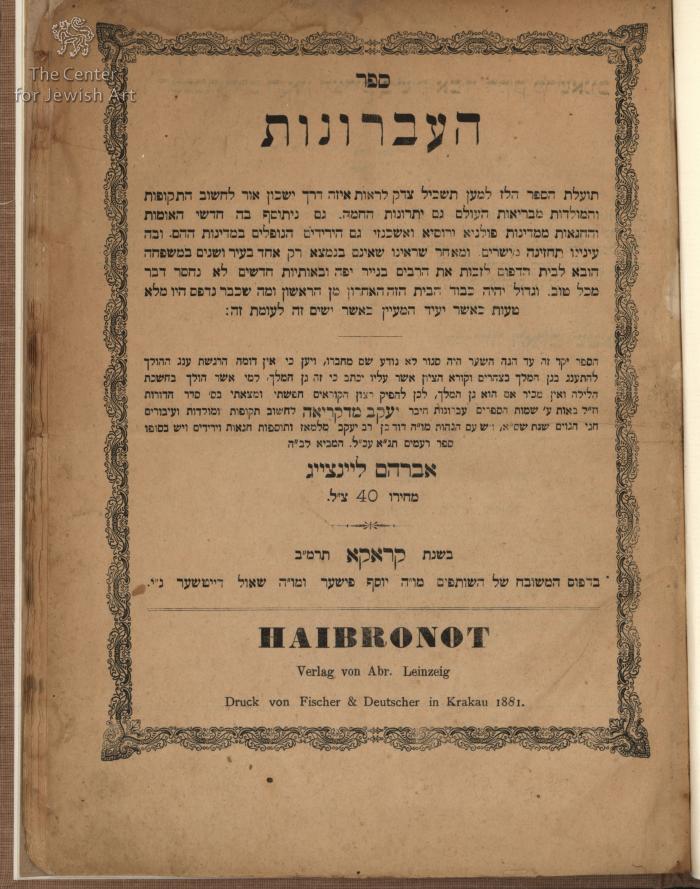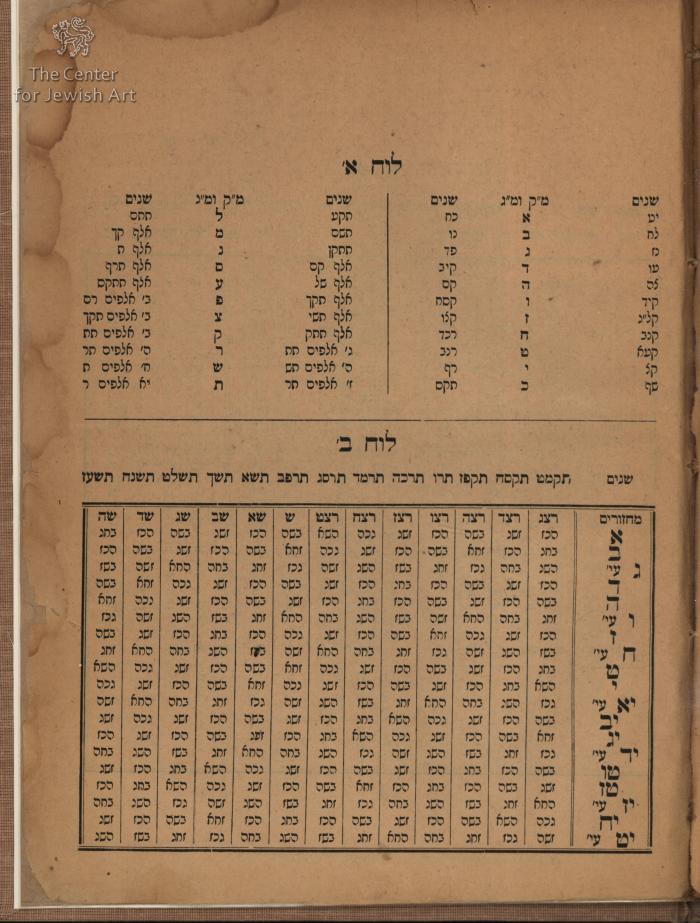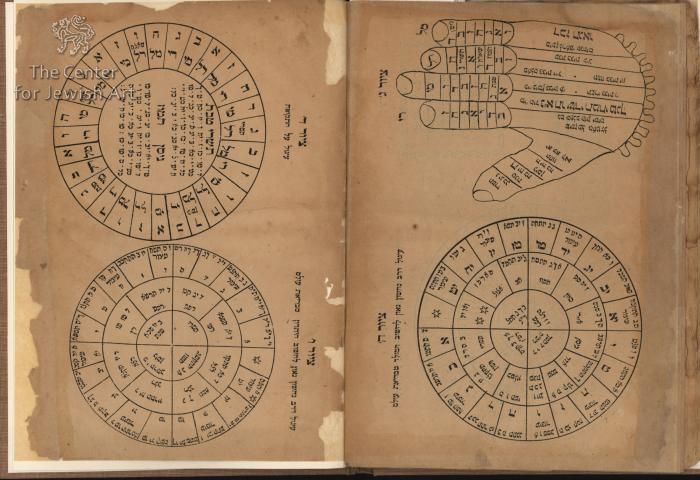Obj. ID: 36232 Evronot, Cracow (Kraków), 1881

sub-set tree:
This text was prepared by William Gross:
Sefer Evronot is a book for calculating of the months and the seasons of the Jewish year. Because the months are reckoned by the moon and the year by the sun, astronomical expertise was required to make the necessary adjustments, in order to ensure that the holidays are celebrated at the proper time. Interest in astronomy was thus mandated for religious Jews. Maimonides in fact devotes an entire section of his Mishnah Torah to what he lists as a positive commandment “to know how to determine which is the first day of each month of the year.”
Ever since the 1615 edition of Sefer Evronot from Lublin, the name of Eliezer b. Jacob Belin Ashkenazi has appeared as "author" on title pages of sifre evronot. Although his name does not even appear on the title page of that edition, which he in fact brought to press, Belin came to be credited with the Jewish computus to the virtual exclusion of all other individuals who preceded him. Some contemporary bibliographers and catalogers have followed suit, attributing all sifre evronot to this elusive "author", about whom very little is known.
Thirteen editions of this important work appeared up to the middle of the 19th century.
Unlike other manuals which rely exclusively on charts and tables, this volume makes ingenious use of multiple spinning dials that serve as circular slide rules and aid in the elaborate computational exercises.
Jews in the late Middle Ages and early Modern period, particularly those whose livelihood was bound up in commercial trade, were required to be able to effectively interact with their Christian neighbors. This necessitated a working knowledge of the general outlines of the Christian calendar in addition to their own. Accordingly, this volume includes Luah Hehagaot, a chart containing the months and fixed saints' days of the Christian ecclesiastical year and a brief accompanying text commonly attributed to Meir ben Joshua Hammelburg.








